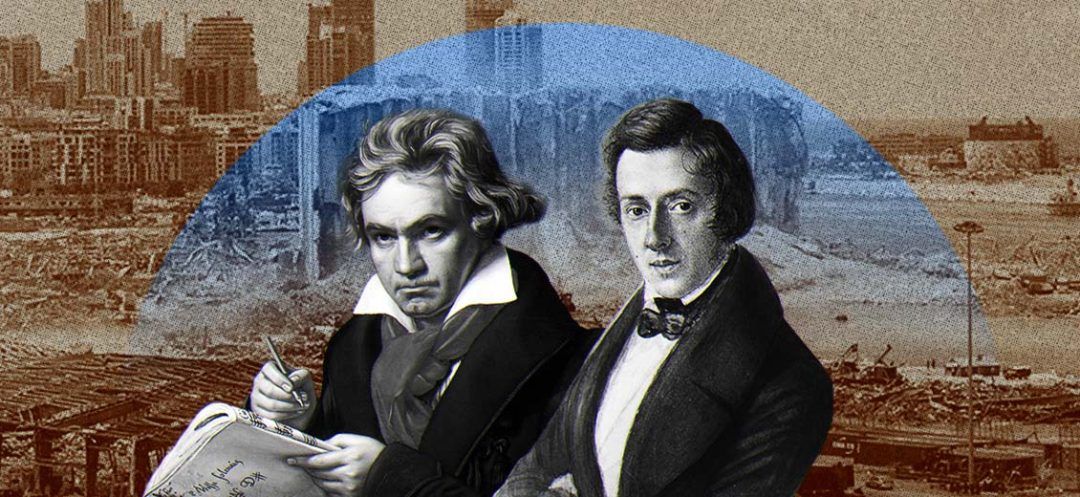
On August 4, 2020, Beirut was suddenly plunged into an apocalyptic night. A day that now marks history. Four years later, This is Beirut commemorates this tragedy through three funeral marches.
It was a summer evening. Beirut buzzed under an amber sky, its alleys caressed by the last rays of day. Nothing suggested that this serenity would be brutally disturbed by a foreboding shadow ready to engulf everything. Beirut dared to embrace life with such intensity, such audacity, such a shiver, that it even mocked death, as if echoing Saint Paul’s words with a scornful tone: "O death, where is thy victory? O death, where is thy sting?"
Though buried, it slowly but surely germinated in the furrows of time to be reborn once again, teeming with life. But that night, August 4, 2020, reality was otherwise. This surge of life was torn apart by a breath of apocalypse. A scarlet twilight. Nothingness. Life itself fell silent, and a harsh odor filled the city. The smell of death. The scent of injustice that would soon reign. On that day, Beirut lay among its ruins as a multitude of souls took flight to eternity, carried away by a wind laden with ashes and suppressed truths.
Four years later, the shadow of Hades still lingers, imposing its macabre silence. On this painful occasion, This is Beirut recounts the story of three grand funeral marches in honor and tribute to those who are no more.
Tragic Grandeur
Before Ludwig van Beethoven (1770-1827), no composer had integrated a funeral march into a sonata structure. Thus, no sonata, no quartet, no symphony by Joseph Haydn (1732-1809) or Wolfgang Amadeus Mozart (1756-1791) includes a funeral march.
Haydn's 44th Symphony, known as the "Funeral," sometimes expresses feelings of sadness, perhaps induced by the idea of death, but it contains no march, and its nostalgic adagio in the central part is far from being a funeral. In contrast, in Beethoven's Symphony No. 3 in E-flat major, known as the "Eroica" (1803-1804), the funeral march occupies the place of the slow movement, adopting its tempo. "But the character is entirely different from a classical adagio due to the tragic grandeur and the overwhelming nature of its extreme parts," notes Bernard Fournier, a distinguished expert on the Bonn genius's work, for This Is Beirut, while listing its features: deep string sounds rendered gloomy by the frequent overlay of the oboe timbre, the stridency of certain chords, and the key of C minor, Beethoven's tonal emblem of dramaticism.
"It is also different due to the extraordinary momentum of its brief central part, where, after the orchestra has somehow climbed a few steps freeing it from the funeral suffocation, an ascending melody leads us towards the light," continues the musicologist. Indeed, twice in this section, a sequence of about ten powerful chords revives the vital energy. According to Bernard Fournier, after the reexposition, asymmetrical as always with the German master — who makes us hear something like the trumpets of judgment day — the coda consists of a deconstruction of the main theme of the funeral march. "Beethoven seems to tell us that death does not have the last word," he notes solemnly.
The Death of a Hero
However, this funeral march is not Beethoven's first. He composed one as the third movement of his Piano Sonata Op. 26 (1800-1801), an atypical work as it begins with a variation movement. "Beethoven composed it at the same time as his ballet, The Creatures of Prometheus, still under the influence of revolutionary ideas and during a period when his deafness began to pose enormous problems and make him think about his death," explains the French specialist.
Unlike the future Funeral March of the "Heroic" Symphony, the sonata's march (Marcia funebre sulla morte d’un Eroe, i.e., Funeral March on the Death of a Hero) has a central part B that remains in the same spirit as the extreme parts A, namely that of a battle. "The music, made up of alternating powerful tremolos and chords, evokes respectively drum rolls and trumpet calls," emphasizes Bernard Fournier. The orchestral parts A, with an essentially homorhythmic writing, rest on a single theme based on a dotted rhythm very characteristic of funeral marches. Even the short coda that introduces a soothing motif retains this obsessive rhythm in the background.
"The homogeneous character of the three parts of this movement partly explains why its transcription for four trombones was used for Beethoven's funeral," adds the octogenarian musicologist.
Solemn Gravity
After the German master, several composers followed this path. Frédéric Chopin (1810-1849) thus composed a funeral march in 1839. The most famous of all. It is none other than the third movement of his Piano Sonata No. 2 in B-flat minor, Op. 35. Imbued with profound melancholy and solemn gravity, this romantic work opens with a dark and mournful theme, characterized by deep and then powerful chords evoking a funeral procession.
The main melody is moving, distinguished by its long held notes and poignant inflections. A marble-like chill pervades the central section of this slow movement, from which one senses the coldness of death. The harmonic progression supports this theme with a melancholic depth, creating a contrast between the funereal slowness and emotional tension. This movement ends with a reprise of the initial theme, but with an even greater intensity, resigning itself to a note of quiet despair and leaving a lasting impression of solemnity and contemplation.
Read more




Comments